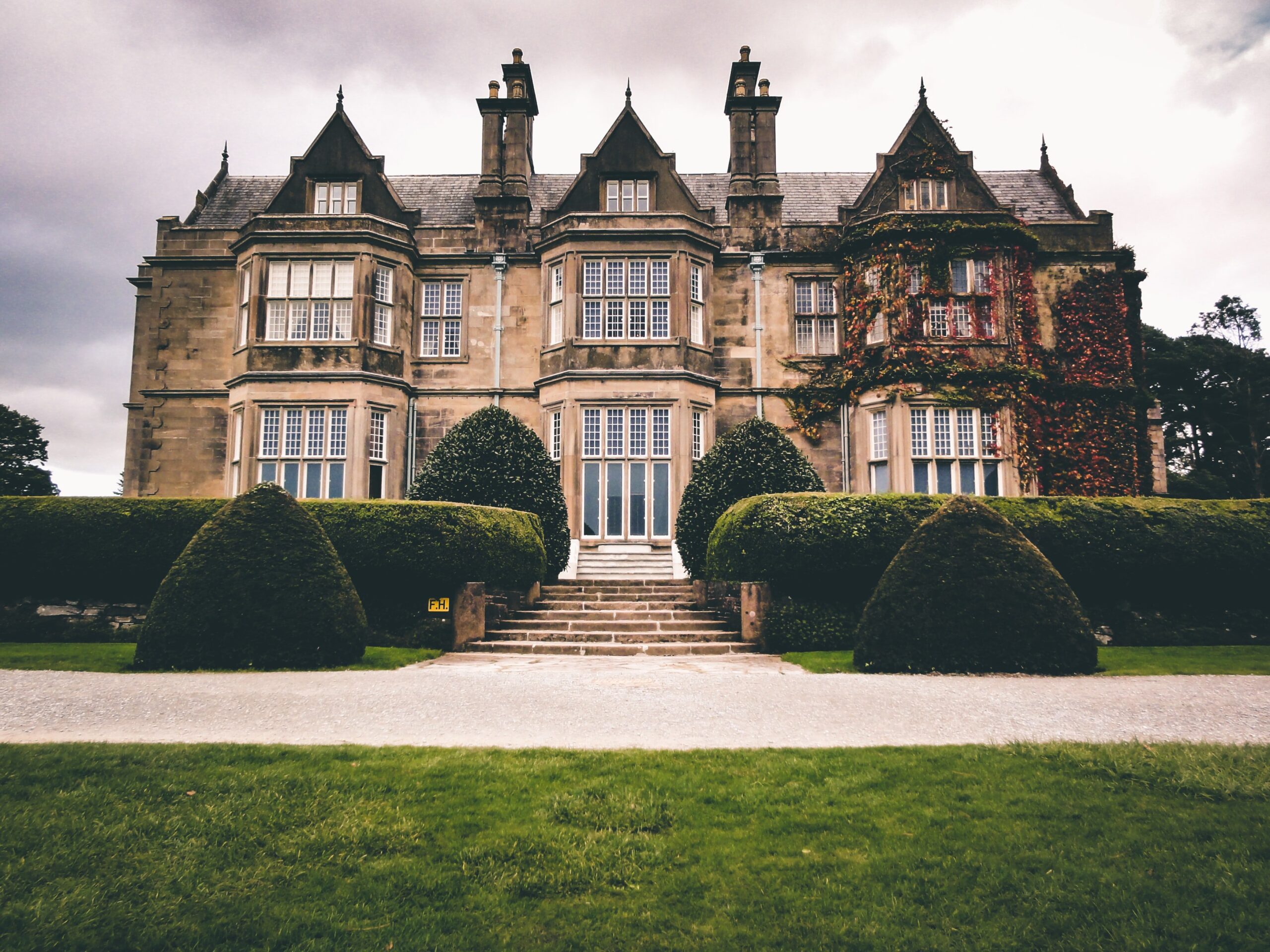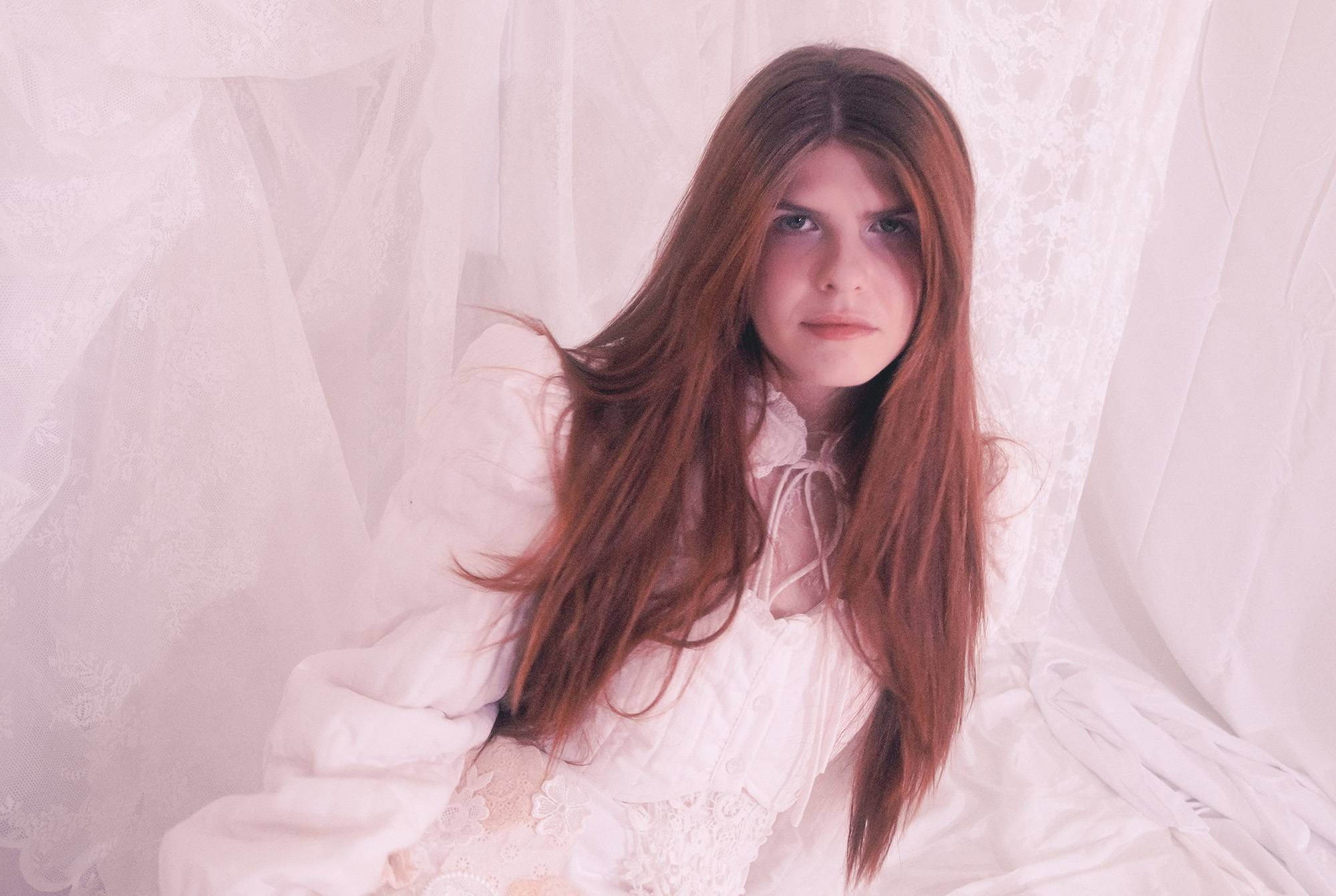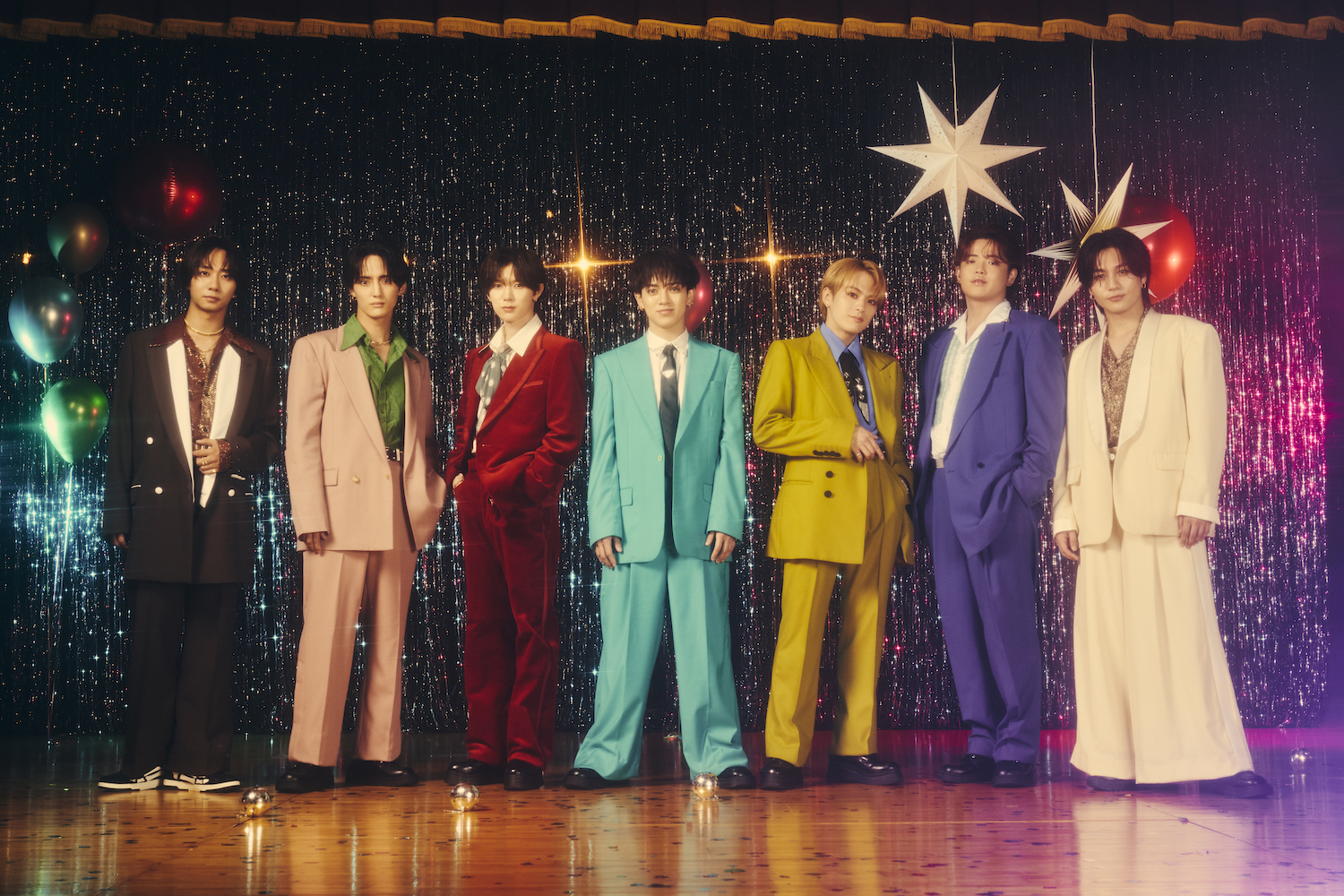
By Fabian-Wiktor (Unsplash)
The first rule of living at Bly Manor is: Don’t talk about ghosts. The second rule is: Don’t talk to the ghosts. The third rule is: You might actually be a ghost.
Netflix’s latest horror series, The Haunting of Bly Manor, trades in a different type of terror than its predecessor, The Haunting of Hill House. Low on jump scares and high on existential torture, Bly Manor asks you to imagine the afterlife as a realm of human husks who may or may not know that they’re dead.
As the series unfolds, we learn that being a ghost means you face the trauma of remembering your own death. Imagine that: After you witness your own dead body, your consciousness lingers but you can’t be seen (not until you “figure out a way,” as one of Bly’s ghosts says), not touched nor heard. Then you’re “tucked away” in a cycle of memories, reliving each moment and painfully realizing how flawed and fleeting your connections with your loved ones were.
As a ghost trapped at Bly, you slowly lose your face as those who loved and remembered you leave you behind. And when all others forget you, you forget yourself.
Is Every Love Story a Ghost Story?
Based on Henry James’s 1898 novella The Turn of the Screw, the nine episodes of Bly Manor attempt to answer: “What is a ghost?” Creator Mike Flanagan says that question almost served as a “thesis statement” while writing the series.
“In a sense, every love story is a ghost story,” Flanagan told Entertainment Weekly. “You’re creating this eventual absence that you’re going to have to deal with. Playing with that idea and playing with the fact that as deep in love as we’re going to go, that’s as deep into loneliness as we’re likely to go.” If every love story is a ghost story, then every ghost story is about fear of feeling too much.
But Bly Manor‘s messy, lawless ghost stories also interrogate other ways that love can haunt us, exploring how strong human connections force weaker ones to break and how the chaos of the afterlife is just a mirror of the chaos of life and love, itself.
Bly Manor shows a man falling in love with his brother’s wife, a would-be love connection between a divorcee and a man devoted to caring for his mother, and a bond between sisters broken irrevocably by their twin desires to have a family (the same family, unfortunately), among other tragic outcomes. If love comes with sacrifice, then what happens to the discarded? How often do we recreate ourselves in love’s image, leaving a ghost of ourselves in the wake of each heartbreak? Are ghosts still capable of love?
But also: Why can some ghosts grab stuff and some ghosts can’t?
It’s always daunting to create an afterlife onscreen. Flanagan (Doctor Sleep, Hush, Oculus) has become a master at building suffocating worlds where people are trapped with the physical manifestations of their traumas. Ghosts are made of our own grief and shame, his work screams.
Or, as developmental psychologist Jesse M. Bering notes (casually, as if this isn’t supremely creepy): “…[B]ecause no one knows what it’s like to be dead, people attribute to dead agents the mental traits that they cannot imagine being without.” How heavily must shame and regret weigh that those are the most common emotions projected onto our ghost stories? (That’s aside from anger, but anger tends to be a secondary emotion to channel more hidden hurts). Bly’s ghosts aren’t angry, though; they’re quiet and determined witnesses. These walking regrets watch us sleep and stare back at us in the mirror.
But what happens to a ghost when it’s not haunting the living? And seriously, why can some ghosts at Bly drink rancid tea and do chores, while others just lurk under stairs? Why is that creepy plague doctor literally everywhere without doing anything?
Flanagan told Den of Geek, “The thing about hauntings are that they defy explanation, because the more you try to explain them, the more ridiculous they can sound.” Indeed, some ghosts at Bly become driven by their most volatile emotions: fear, rage, jealousy. They plot to possess the living and scheme to escape their fate. Others just fade into the shadows, watching the living with no purpose and no memory of who they once were.
So what differentiates them? The force of their emotions? Karma? Their hotness? In The Cut‘s, “Can Someone Please Explain to Me the Ghost Laws?” Claire Lampen implores, “Can all the ghosts do possessions? Is it only the conspicuously hot ones central to the story, or could the random plague doctor do it, too?”
Flanagan acknowledges, “[Ghosts] also create rules for themselves that become problematic. If the ghost is there because they were murdered before their time and they wanted revenge and now they’re killing other people, why don’t (the other people) get to be ghosts? Why don’t all the campers in Crystal Lake also get to come back and kill everybody?”
Life Is Just a Memory (Death Is Forgetting)
In Bly Manor, the afterlife is an imitation of life. The sprawling grounds of the manor are filled with wild English foliage, which is tamed by the rugged gardener, Jamie (Amelia Eve). Danielle Clayton (Victoria Pedretti) is an American au pair hired to care for two grieving orphans staying at the country estate, 8-year-old Flora and 10-year-old Miles.
Precocious and peculiar, they blend in perfectly with the manor’s gothic drapery and winding hallways–where they’ve been all but abandoned by their wealthy uncle, Henry Wingrave (Henry Thomas), whose guilt over his affair with their late mother keeps him at a distance, despite being the last link to their parents. The children are cared for by their enigmatic housekeeper, Hannah Grose (T’Nia Miller); the philosophical cook, Owen (Rahul Kohli); the gardener; and Dani.
Carla Gugino plays the mysterious narrator of Bly Manor. When she’s later revealed to be the aged gardener recounting what happened at Bly at a wedding set in the future, it’s not really a surprise given Gugino and Amelia Eve’s similar, though odd, attempts at Northern English accents. She describes the somewhat sympathetic backstory of the The Lady in the Lake and how she’s murdered innocent people over a span of decades, but she doesn’t remember because she’s trapped in a loop of her own anger and longing.
“She would sleep. She would wake,” the elder Jamie tells her audience of wedding guests. “She would walk. She would sleep. She would wake. She would walk. And time went by. How much time it was impossible to reason.”
It’s not the most graceful reveal, with pre-ghost Lady Viola Lloyd’s entire life reduced to a black-and-white flashback episode, but memory is fragmented and messy too.
Like the children, most of the adults at Bly have found themselves there after a traumatic life event. Dani is literally running from the ghost of her fiancé (whose death she feels responsible for), Owen quit his studies in Paris to become Bly’s cook after his mother fell ill, and Hannah accepted a live-in position at Bly after her husband abandoned her. By the series’ end, Dani trades being haunted by her fiancé to being haunted by The Lady in the Lake, the central ghost and focal point of Bly Manor’s power.
Everyone exists in a kind of suspended animation at Bly, allowing the series to revolve around the question of who’s really living and who’s not? Of greater concern: What does it even mean to be alive? By blurring the boundary between the living and the dead, the show suggests that, ultimately, a life is nothing but a memory—when you’re gone, your life amounts to the consequences of your actions and their slow reverberations.
It’s You, It’s Me, It’s Us—Forever at the Bottom of This Lake
There are no villains in the afterlife—just agents of chaos and their collateral damages. As it turns out: Death is alienating. Loneliness turns Lady Viola Lloyd into a faceless lake creature. Desperation turns Peter Quint (Oliver Jackson-Cohen), the charismatic and “conspicuously hot” conman who worked as Henry Wingrave’s valet, into an even bigger asshole in death than he was while alive.
The woman Quint purports to love, Miss Jessel, is caught in the gravitational pull of his ruthlessness. When we meet the children’s former au pair, Rebecca Jessel (Tahirah Sharif) is trapped at Bly as the ghostly friend of Flora, sometimes playing with the young girl and sometimes possessing her. Rebecca becomes trapped in a loop of her intimate memories with Peter, re-experiencing the horror that her lover is the same selfish, damaged man who forced her to drown herself in the lake.
Is a final moment of regret enough to redeem a lifetime (and then some) of being an asshole? Bly Manor seems to imply so in the closest thing we get to a redemption arc for any of the characters (be it The Lady in the Lake, Peter Quint, or Dani–whose central offense is against herself by denying her sexuality).
The strange incantation that allows ghosts to possess and bind themselves to living people (“It’s you, it’s me, it’s us”) is the key to freeing all of Bly’s ghosts–at the cost of Dani’s freedom. When she binds herself to The Lady in the Lake, all the ghosts are freed, including Peter, who appears to genuinely regret plotting to steal young Miles’s life.
Why does a simple declaration that you’re not alone break the curse binding all the ghosts to Bly? It certainly fits the show’s weird Kafkaesque afterlife, defined by isolation and the knowledge that you’ve been entrapped by your flawed choices. At Bly, taking personal accountability for your actions is the only way to move on.
But ultimately, in Mike Flanagan’s haunted world, human connection is both our greatest strength and greatest flaw. A happy ending means liberation from cycles of endless, fragmented memory, which only happens when people accept their shame and guilt and will themselves to carry on–be it with love and commitment or with selfishness and greed–which grounds them in the present and frees them from the toxic cycles that haunt their past.
Henry Wingrave finally stops drinking alone in his office and begins to bond with his niece and nephew. Dani decides to build a full, rich life with Jamie, despite knowing her ultimate fate is at the bottom of the lake at Bly Manor.
At the very least, ghosts are crude signifiers of cause and effect, reminders that each decision is one string in a web that we won’t ever fully see. “A ghost is a memory, a daydream, a secret, grief, anger, guilt,” Flanagan wrote in the first script for The Haunting of Hill House. “But, in my experience, most times they’re just what we want to see… Most times, a ghost is a wish.”
We only fear hauntings because we fear the unknown, and what’s scarier than the hidden parts of ourselves, the well of things we’re afraid to feel while we’re alive?
The ghost world in Bly Manor makes as much sense as anything else in the great big genre of hauntings: We’re terrified of what we don’t know, and nothing scares us more than defamiliarized versions of our lives. After all, a ghost is just the “haunted site of memory,” writes German author Elmar Schenkel. “From prehistory to this day, we have been haunted by our memories, the past itself, by inklings of the future, by events playing outside our lives, and by ourselves.”
Ghosts are the paradoxical answer to our fears about one day falling into death’s void, replacing that fear with the more familiar terror that we won’t go anywhere at all, while the world transforms into some unknown entity that engulfs and forgets us.
- “The Haunting of…” Series – Popdust ›
- 9 of the Best Horror Shows to Binge Watch on Netflix – Popdust ›













